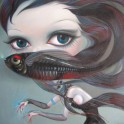2017年5月25日(木)
The fact that light could be polarized
The fact that light could be polarized was for the first time qualitatively explained by Newton using the particle theory. étienne-Louis Malus in 1810 created a mathematical particle theory of polarization. Jean-Baptiste Biot in 1812 showed that this theory explained all known phenomena of CATV splitter polarization. At that time the polarization was considered as the proof of the particle theory.
Wave theory
To explain the origin of colors, Robert Hooke (1635-1703) developed a "pulse theory" and compared the spreading of light to that of waves in water in his 1665 work Micrographia ("Observation IX"). In 1672 Hooke suggested that light's vibrations could be perpendicular to the direction of propagation. Christiaan Huygens (1629-1695) worked out a mathematical wave theory of light in 1678, and published it in his Treatise on light in 1690. He proposed that light was emitted in all directions as a series of waves in a medium called the Luminiferous ether. As waves are not affected by gravity, it was assumed that they slowed down upon entering a denser medium.[32]
Christiaan Huygens.
Thomas Young's sketch of a double-slit experiment showing diffraction. Young's experiments supported the theory that light consists of waves.
Wave theory
To explain the origin of colors, Robert Hooke (1635-1703) developed a "pulse theory" and compared the spreading of light to that of waves in water in his 1665 work Micrographia ("Observation IX"). In 1672 Hooke suggested that light's vibrations could be perpendicular to the direction of propagation. Christiaan Huygens (1629-1695) worked out a mathematical wave theory of light in 1678, and published it in his Treatise on light in 1690. He proposed that light was emitted in all directions as a series of waves in a medium called the Luminiferous ether. As waves are not affected by gravity, it was assumed that they slowed down upon entering a denser medium.[32]
Christiaan Huygens.
Thomas Young's sketch of a double-slit experiment showing diffraction. Young's experiments supported the theory that light consists of waves.
| コメント(0件) | コメント欄はユーザー登録者のみに公開されます |
